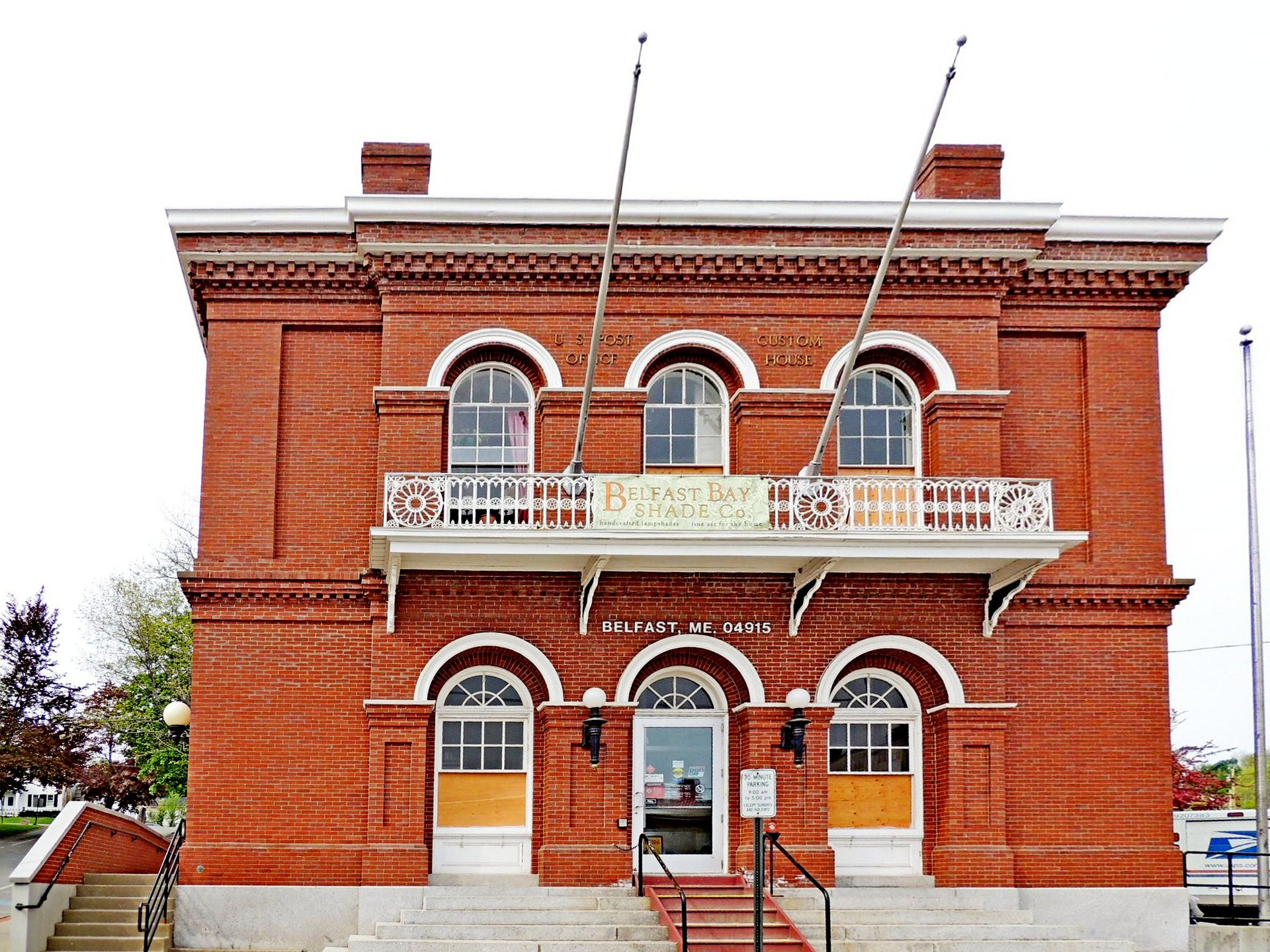|
 Belfast, Maine Posted by:  T0SHEA T0SHEA
N 44° 25.517 W 069° 00.456
19T E 499395 N 4919109
Its namesake is Belfast, Ireland and it is now a quiet little city on the shore of Penobscot Bay, home to artists and artisans, history and heritage.
Waymark Code: WMQAPQ
Location: Maine, United States
Date Posted: 01/24/2016
Views: 2
Named for Belfast, Ireland, Belfast, Maine was settled by Scotch-Irish settlers who arrived in 1770, having first tried settling at Londonderry, N.H. Today the seat of Waldo County, Belfast lies at the mouth of the Passagassawakeag River on Penobscot Bay, about 45 miles east of Augusta. Incorporated as a city in 1853 , it was to be the eighth in Maine. In Belfast is one of the older churches in the state, First Church of Belfast, a Congregationalist Church, a National Historic Place, erected in 1818. There are about a dozen other National Historic Places in the city, with many fine old houses still standing, as well.
Below is an excerpt on Belfast from the American Guide Series book, Maine, A Guide 'Down East', while further below is a short history of Belfast, from the city's website.
BELFAST (alt. 160, pop. 4993), 79.3 m., a popular tourist center and
seat of Waldo County, has parallel streets that follow a rolling terrain, which rises in a majestic sweep from the banks of the Passagassawakeag. Its highest points command a view over the island-sprinkled waters of Penobscot Bay.
The town was named for Belfast, Ireland, by a group of Scotch-Irish
settlers who came to the place in 1770, after having tried settlement at Londonderry, N.H. Belfast was harassed by the British in 1779 and its settlers were driven away, but they successfully re-established themselves five years later. The city reached its peak of population in 1860 with 5520 inhabitants, but has since achieved prosperity by catering to the many summer residents and visitors.
Reminiscent of an earlier prosperity are the many fine old houses, whose chief interest lies in their variation on the standard eighteenth-century architecture.
From Maine, A Guide 'Down East'
History of Belfast
Early History
In the spring of 1770, Belfast was settled by Scottish-Irish families from Londonderry, New Hampshire. Legend has it that the name Belfast, after the Northern Ireland city, was chosen by a coin-toss. Fear of British attack led these original proprietors to abandon the settlement during the American Revolution, but they returned in the 1780s to build a vibrant, prosperous outpost that would become the market center for the outlying area.
1800s
Abundant timber, a gently sloping waterfront, and proximity to varied agriculture gave rise to shipbuilding and maritime commerce. Hundreds of wooden sailing ships were built by local shipyards, and during the 19th century, as much as 30% of the male population was employed in the maritime trades. In 1868, construction began on the Belfast and Moosehead Lake Railroad, which connected Belfast to the Maine Central Railroad at Burnham Junction. Belfast merchants sold a variety of goods, and steamship operators who provided transportation between coastal towns advertised “shopping excursions” to Belfast. Prosperous shipbuilders and merchants constructed the architecturally significant houses that dominate our residential neighborhoods today.
Two disastrous fires consumed much of the downtown area in 1865 and 1873, but merchants rebuilt with brick, creating a pleasing and long-lasting commercial district. The Belfast Historic Districts, residential and commercial, are included on the National Register of Historic Places.
1900s
The city’s prosperity, built on shipbuilding and commerce in such unglamorous cargoes as hay, ice, apples, and fertilizer, began to fade as the 20th century unfolded. A four-story shoe factory dominated the industrial area, and Belfast became a blue-collar town. By the 1950s poultry, sardine, and potato companies had set up processing plants along the waterfront. Belfast called itself the Broiler Capital of the World, and each July, thousands came to eat barbecued chicken on Broiler Day.
In 1962, Route 1 was rerouted around the City and across a new bridge. The rerouting was seen by some as the death knell for a once-vibrant shire town. In hindsight, the bypass preserved the City’s heart and soul, and in the 1980s a rebirth began. The arts flourished, and the stately houses and commercial buildings were restored. In the early 1990s, USA Today named Belfast as one of America’s culturally cool communities. Today, Belfast is that rare combination of quiet small town with an active social and cultural life that is attractive to residents and visitors alike.
From the City of Belfast Visit Instructions:
To post a visit log to this waymark you need to visit and write about the actual physical location. Any pictures you take at the location would be great, as well.
Recent Visits/Logs:
| There are no logs for this waymark yet. |
|
|
|
|